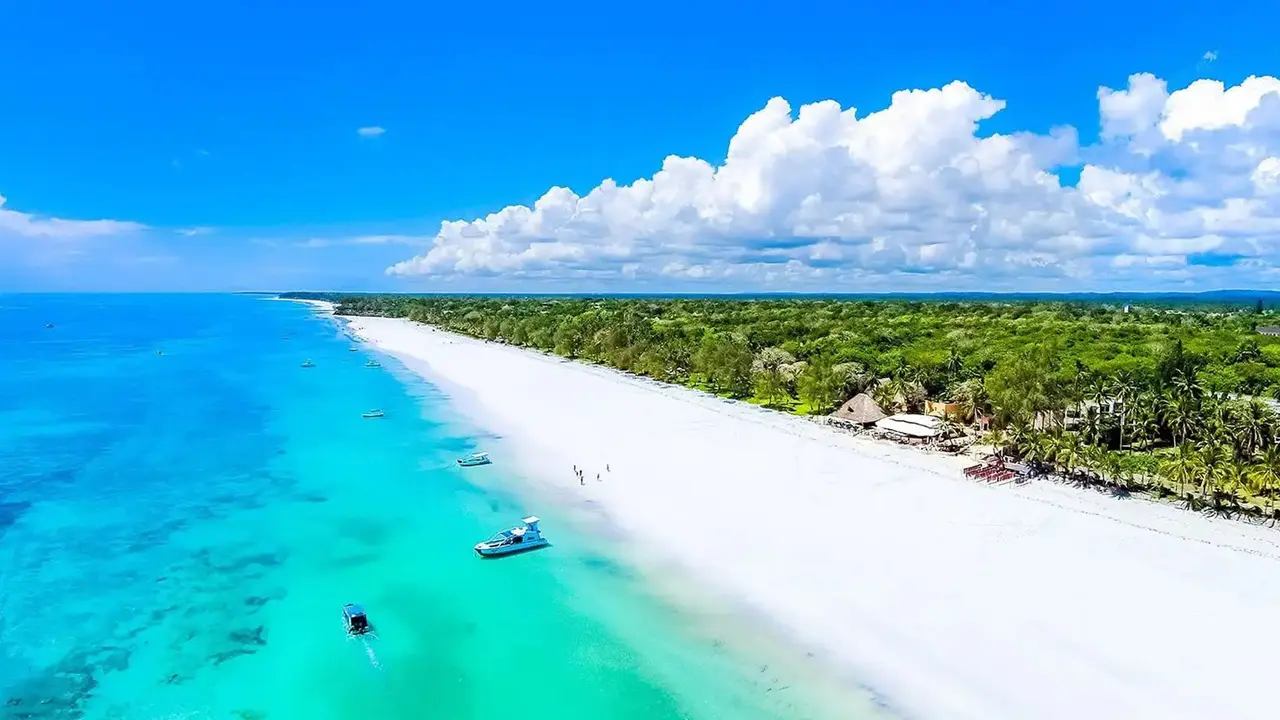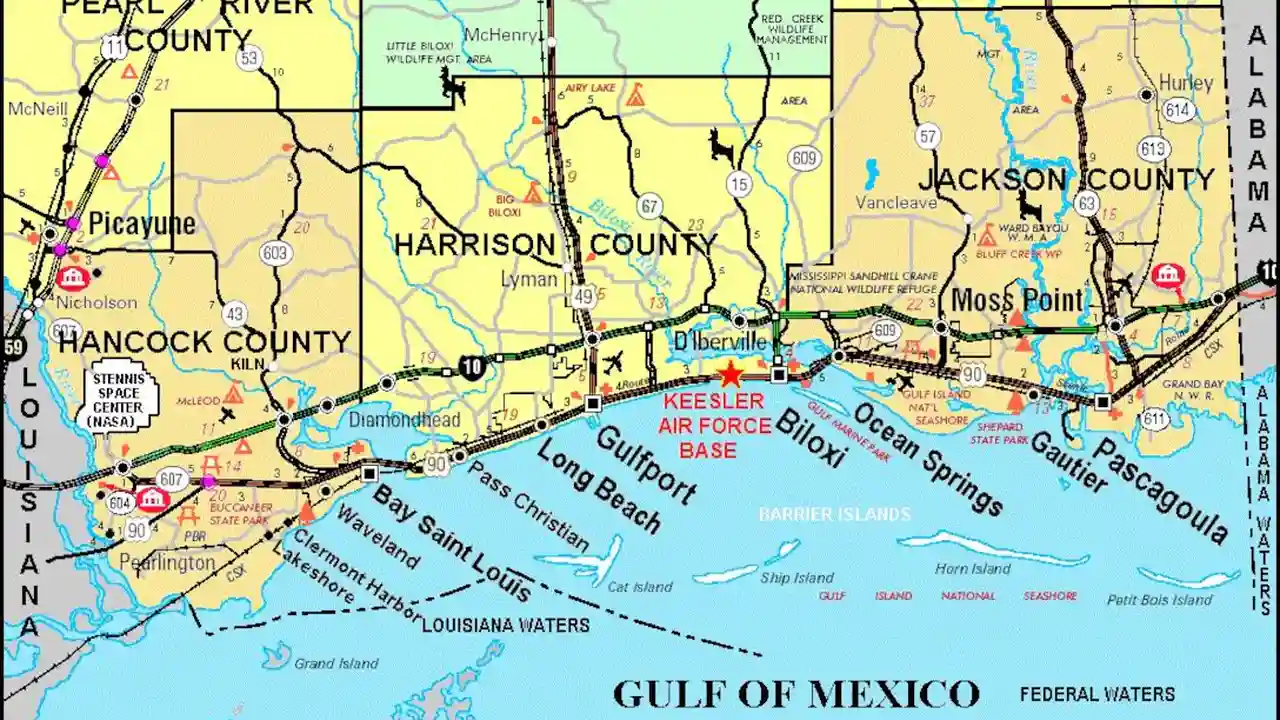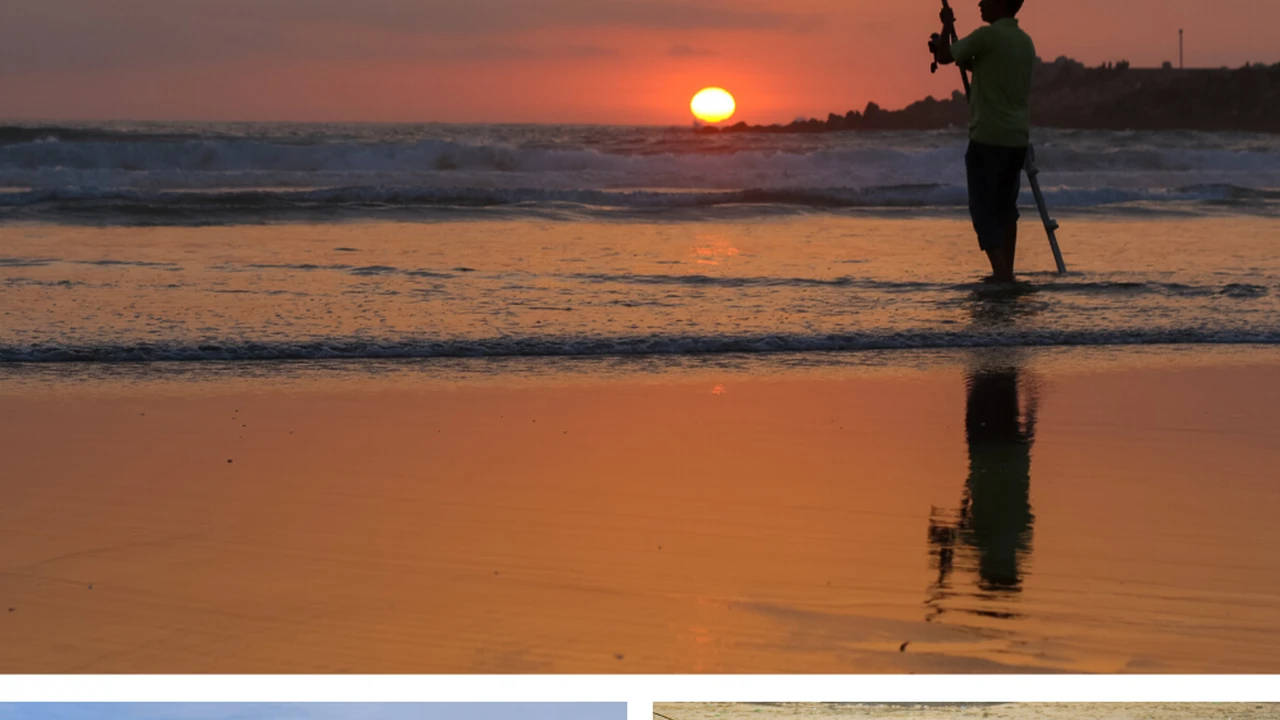5 Coastal Communities Leading the Way in Climate Change Adaptation
Explore 5 coastal communities leading the way in climate change adaptation, implementing innovative strategies to protect their shorelines.

Climate Change and Coastal Communities: An Urgent Reality
Hey there, beach lovers and ocean enthusiasts! Let's talk about something super important: climate change and how it's impacting our beloved coastal communities. Sea levels are rising, storms are getting more intense, and erosion is becoming a bigger problem than ever. But it's not all doom and gloom! Some amazing communities are stepping up and finding innovative ways to adapt. Let's dive into five awesome examples!
1. Rotterdam, Netherlands: Floating Solutions for Rising Sea Levels
First up, we're heading to Rotterdam! This Dutch city is practically synonymous with water management. With a large portion of the city lying below sea level, they've been dealing with water issues for centuries. But climate change has brought new challenges, and Rotterdam is responding with some seriously cool solutions.
Floating Homes and Structures: A Key Adaptation Strategy
One of the most innovative approaches is the development of floating homes and structures. Imagine entire neighborhoods that can rise and fall with the water level! These aren't your grandma's houseboats; they're modern, sustainable homes designed to withstand extreme weather. Rotterdam's Floating Pavilion is a prime example – a stunning structure that hosts events and showcases the city's commitment to water adaptation.
Enhanced Flood Defenses: A Multi-Layered Approach
Beyond floating structures, Rotterdam is investing heavily in enhanced flood defenses. This includes upgrading dikes, building storm surge barriers, and creating water plazas that can temporarily store excess rainwater. The "Room for the River" program is another clever initiative, giving rivers more space to flow and reducing the risk of flooding.
2. Miami Beach, Florida, USA: Combating Sea Level Rise with Engineering and Nature
Next, we're hopping across the pond to Miami Beach! This vibrant city is facing a serious threat from sea level rise. Sunny days can now bring "sunny day flooding" as high tides inundate streets. But Miami Beach isn't giving up without a fight!
Elevating Roads and Installing Pump Systems: Protecting Infrastructure
One of the city's primary strategies is elevating roads and installing powerful pump systems to remove floodwater. This helps keep the city's infrastructure functioning and protects homes and businesses. It's a costly endeavor, but Miami Beach sees it as a necessary investment in its future.
Living Shorelines and Mangrove Restoration: Natural Coastal Defenses
Miami Beach is also embracing nature-based solutions. They're restoring mangrove forests and creating "living shorelines" using oyster reefs and other natural materials. These natural barriers help absorb wave energy and reduce erosion, providing a more sustainable and aesthetically pleasing alternative to concrete seawalls.
3. Dhaka, Bangladesh: Building Resilience in a Vulnerable Megacity
Now, let's travel to Dhaka, Bangladesh, one of the world's most vulnerable cities to climate change. Located in the low-lying Ganges Delta, Dhaka is highly susceptible to flooding and cyclones. But despite these challenges, the city is finding ways to build resilience.
Community-Based Adaptation: Empowering Local Residents
A key element of Dhaka's adaptation strategy is community-based adaptation. This involves empowering local residents to identify their vulnerabilities and develop solutions that work for their specific needs. This can include building raised platforms for homes, improving drainage systems, and providing early warning systems for floods.
Investing in Water Management Infrastructure: A Long-Term Strategy
Dhaka is also investing in large-scale water management infrastructure, such as embankments and drainage canals. These projects are designed to protect the city from flooding and improve sanitation. However, these projects need to be carefully planned to avoid unintended consequences, such as disrupting natural ecosystems.
4. Copenhagen, Denmark: Green Infrastructure for Climate Resilience
Let's head back to Europe and check out Copenhagen, Denmark. This city is known for its commitment to sustainability and its innovative approach to climate change adaptation. Copenhagen is focusing on green infrastructure to build resilience.
Green Roofs and Rain Gardens: Absorbing Excess Water
Copenhagen is encouraging the use of green roofs and rain gardens to absorb excess rainwater and reduce the burden on the city's drainage system. Green roofs also help insulate buildings, reducing energy consumption, and improving air quality. These initiatives are supported by government incentives and public awareness campaigns.
Cloudburst Management Plan: A City-Wide Approach
Copenhagen has developed a comprehensive "Cloudburst Management Plan" to prepare for extreme rainfall events. This plan involves creating temporary water storage areas, improving drainage systems, and protecting critical infrastructure. The plan is designed to minimize the impact of cloudbursts on the city and its residents.
5. Shishmaref, Alaska, USA: Relocation as a Last Resort
Finally, let's travel to Shishmaref, Alaska. This small island community is facing a particularly dire situation. Due to melting sea ice and coastal erosion, the island is literally disappearing. Shishmaref is a stark reminder of the devastating impacts of climate change, and the community is grappling with the difficult decision of whether to relocate.
The Challenges of Relocation: A Complex and Emotional Process
Relocating an entire community is a complex and emotional process. It involves finding a suitable new location, building new homes and infrastructure, and preserving the community's cultural identity. The people of Shishmaref are working with government agencies and other organizations to find a viable solution, but the challenges are immense.
Highlighting the Urgency of Climate Action: A Call to Action
Shishmaref's story highlights the urgency of climate action. We need to reduce our carbon emissions and invest in adaptation measures to protect vulnerable communities around the world. The time to act is now!
Products and Scenarios for Coastal Protection and Adaptation
Okay, so we've talked about these amazing communities and their adaptation strategies. But what about the tools and products that can help? Here are a few examples, with scenarios and price points:
Scenario 1: Protecting Your Beachfront Property
Imagine you own a beachfront property and you're worried about erosion. What can you do?
* **Product:** Geotextile Sandbags
* **Description:** These are durable bags filled with sand that can be used to create temporary seawalls or reinforce existing dunes.
* **Use Case:** Stack them along the shoreline to prevent waves from eroding the sand.
* **Pros:** Relatively inexpensive, easy to install.
* **Cons:** Not a permanent solution, can be unsightly.
* **Price:** $2-$5 per bag. You might need hundreds depending on the size of your property.
* **Product:** Living Shoreline System (Oyster Reefs)
* **Description:** Create an artificial oyster reef to break waves and provide habitat.
* **Use Case:** Install oyster castles or reef balls along the shoreline to reduce wave energy and encourage oyster growth.
* **Pros:** Environmentally friendly, enhances biodiversity, provides long-term protection.
* **Cons:** More expensive, requires permits, takes time to establish.
* **Price:** $50 - $200 per reef ball, plus installation costs. Can easily run into the thousands.
Scenario 2: Managing Floodwater Around Your Home
Let's say you live in a low-lying area that's prone to flooding. How can you protect your home?
* **Product:** Sump Pump
* **Description:** A pump that removes water from your basement or crawlspace.
* **Use Case:** Install a sump pump in your basement to prevent flooding during heavy rains or high tides.
* **Pros:** Relatively inexpensive, effective at removing water.
* **Cons:** Requires electricity, can be noisy, needs maintenance.
* **Price:** $100-$400 for the pump, plus installation.
* **Product:** Flood Barriers
* **Description:** Inflatable or solid barriers that can be placed around your home to prevent water from entering.
* **Use Case:** Deploy flood barriers around your doors and windows when a flood is imminent.
* **Pros:** Effective at preventing water from entering your home, reusable.
* **Cons:** Can be expensive, requires storage space, may not be suitable for all types of homes.
* **Price:** $500-$5000 depending on the size and type of barrier.
Scenario 3: Monitoring Coastal Erosion
You are a coastal community leader and want to track erosion rates. What tools can you use?
* **Product:** Drone with LiDAR
* **Description:** A drone equipped with LiDAR (Light Detection and Ranging) technology to create accurate 3D maps of the coastline.
* **Use Case:** Regularly fly the drone over the coastline to monitor erosion rates and identify areas that are most vulnerable.
* **Pros:** Provides accurate data, can cover large areas quickly.
* **Cons:** Expensive, requires specialized training, subject to weather conditions.
* **Price:** $10,000-$50,000 for the drone and LiDAR system, plus training and maintenance.
* **Product:** GPS Surveying Equipment
* **Description:** High-precision GPS equipment to measure the elevation and location of coastal features.
* **Use Case:** Conduct regular surveys of the coastline to track changes in elevation and identify areas of erosion or accretion.
* **Pros:** Accurate, reliable, relatively inexpensive.
* **Cons:** Time-consuming, requires skilled personnel.
* **Price:** $1,000-$5,000 for the GPS equipment.
Budget vs. Luxury Coastal Adaptation: A Comparison
Coastal adaptation doesn't have to break the bank. Here's a quick comparison of budget-friendly and luxury options:
* **Budget:** Sandbags, sump pumps, rain barrels, community-based adaptation initiatives.
* **Luxury:** Living shorelines, elevated homes, advanced flood barriers, drone-based monitoring systems.
The best approach depends on your specific needs and budget. But remember, even small steps can make a big difference in protecting your coastal community from the impacts of climate change.
:max_bytes(150000):strip_icc()/277019-baked-pork-chops-with-cream-of-mushroom-soup-DDMFS-beauty-4x3-BG-7505-5762b731cf30447d9cbbbbbf387beafa.jpg)






